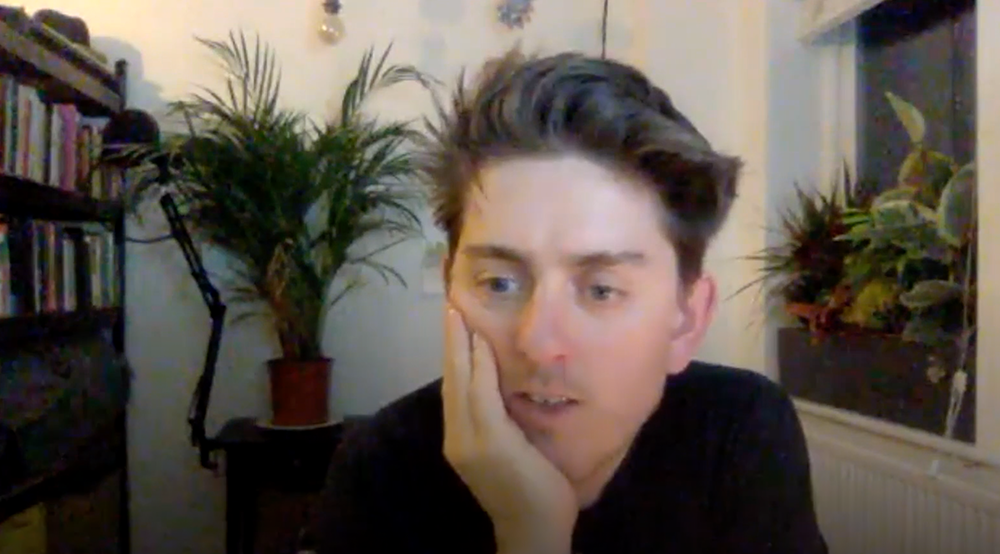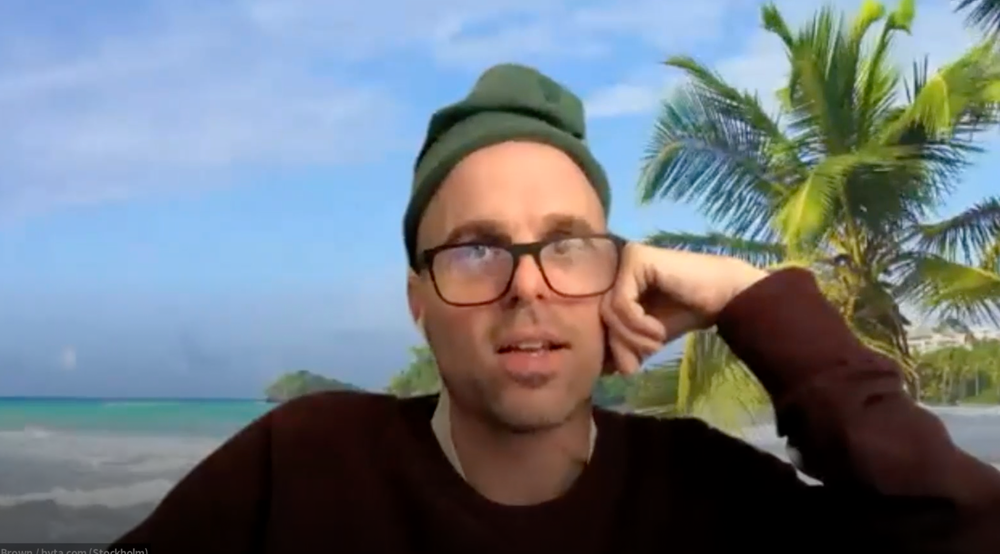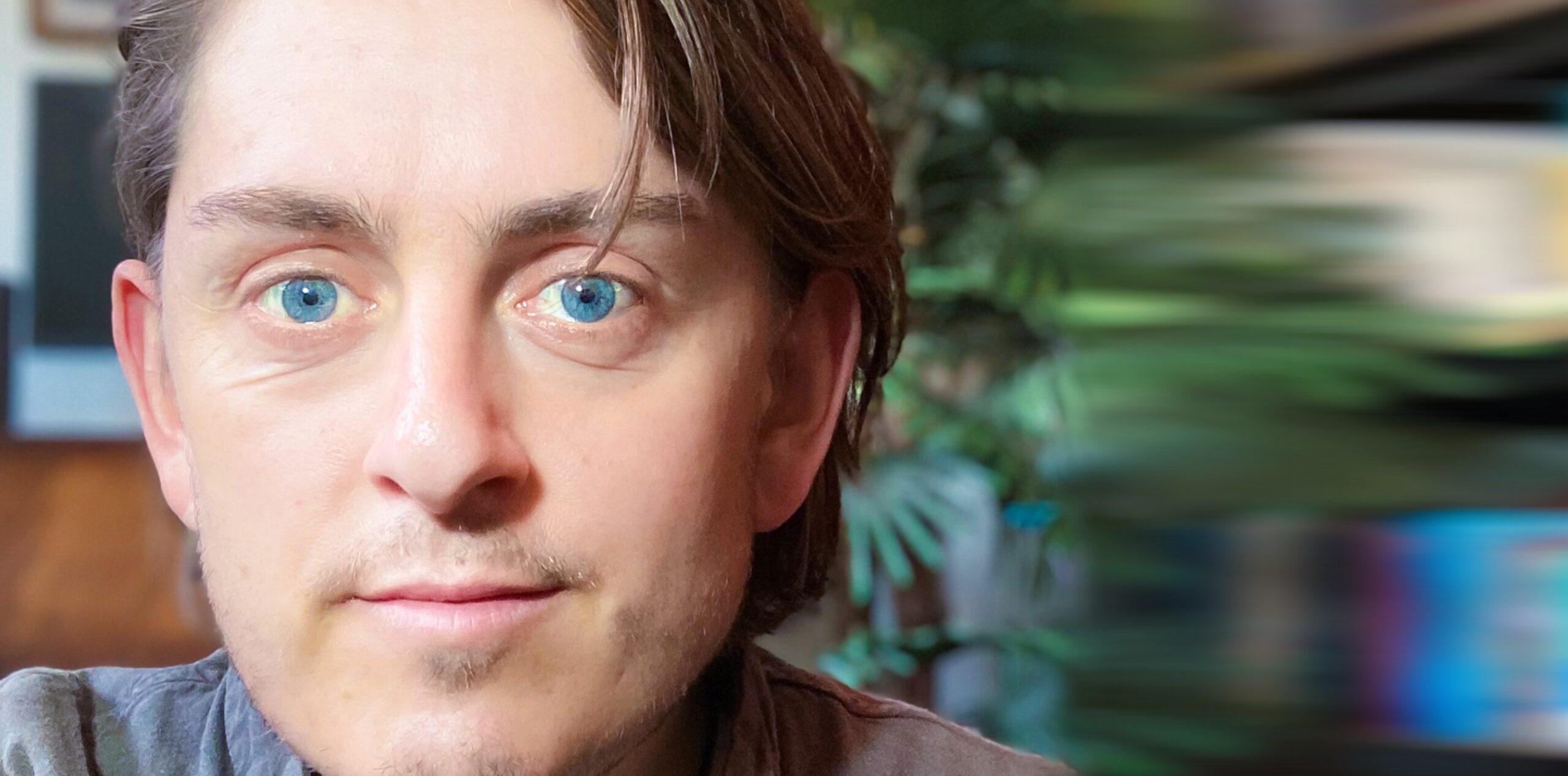Prepare for Takeoff: Release Planning & Building A Team
Having gotten his start in the music industry as a member of a touring rock band, Phil Loutsis moved to London from Sheffield in 2016. He had been asked to help develop what are now the Artist & Label Development teams for AWAL. In its early years, the company received a lot of attention for presenting a new way of doing business, a disruptor challenging the music industry’s standard practices. Phil’s focus over the last few years has been AWAL's platform business where the company empowers artists with great support and tools.
#HowWeListen Live: In Conversation with Phil Loutsis took place on Tuesday, November 30th, 2021. Phil Loutsis is the VP of the AWAL Community Team looking after the platform business and developing artists and labels.
The following transcript has been edited for length and clarity.
Part I of II
In part I (below), Phil talks about how he went from recording and playing live in a band from Sheffield, UK, to being one of the early hires at AWAL, where he is now VP of Community. Marc and Phil talk about release planning & all the parts that need to be ready to go when you launch your new album or single, plus they touch on paid marketing.
The following transcript has been edited for length and clarity.
Marc Brown: Hey Phil, thanks for joining us! Can you tell me a bit about your background and how you started working in music?
Phil Loutsis: For sure, I was in a band for a long time. After I left university, I moved up to Sheffield to pursue a career in my electro-indie band. I spent a long time doing that, and I loved it and learned a lot during that period. It was a weird time for the music industry – downloads were becoming less of a thing, and streaming was starting to creep in.
I started working at AWAL in 2011, so it’s been about ten years. It’s developed from a small team of about 8, and now we’re doing all sorts of interesting things. That was my journey into the music industry. I was in a band and not really in the industry. I learned about the industry properly as part of AWAL.
Marc: When you were in the band, did you have a manager, or did you do it all yourselves?
Phil: We did it all ourselves. We were a three-piece band, doing a lot of gigs and recording and making records. We were incredibly ambitious, incredibly energized and incredibly clueless.
Marc: The holy trinity.
Phil: Ha, exactly! Our hearts were in the right place, and our energy was good, but we didn’t know what we were doing. I’m mentioning that because it’s what led me in the direction, I went in – supporting developing artists and labels. I get a massive kick out of doing it, and that’s my focus at AWAL. I am helping independent artists, managers, and labels make their way in the industry. With the intention of getting them into a position where they can keep making the great music they make.
Marc: For the people on here who maybe don’t make music but want to work in it – how did you get from being in a band to working at AWAL? You explained it so quickly, but a lot of people think that’s a long journey – like how do I get my first in? Can you quickly summarise how you did that?
Phil: For me, being part of the music community in Sheffield meant that when an opening came up in AWAL at the bottom rung, I heard about it. They just needed someone to come in and help them with CDs cause that was still a thing back then. When I got that opportunity, it wasn’t lucrative or secure, but it was in an industry I was interested in. It was also a company that seemed interesting, so I said yes. I just invested a lot of time and energy in it. I was excited to be there from the get-go. It wasn’t necessarily the best opportunity initially, but it felt like the right opportunity.
Marc: You said it wasn’t a stable opportunity, but aren’t you now the longest-serving staff member at AWAL?
Phil: Yeah!
Marc:: So, in hindsight, it was very stable!
Phil: Yeah, that’s true! It’s amusing to look back – I couldn’t have foreseen the journey.


Marc: I think that’s the challenge with anything in life, but certainly anything in music. It’s tough to look into the future and figure out what to do.
The one thing that comes up in most conversations I have is the idea of release plans. You deal with many artists at AWAL – so what do you do when this release stuff comes up? Do most artists already know, or how do you teach someone how to release a record and timelines?
Phil: It’s such a big question. It depends on what people are trying to achieve, but we deal with it by outlining best practices. Generally, you want about 4-6 weeks of lead time. There’s a lot of stuff to do in that time so getting assets delivered nice and early is ideal. We always tell this to the artist at the beginning of our relationship with them.
But of course, we have our rules, and we break them regularly depending on the act. For example, when we distribute music – if a song is suddenly blowing up, we’re not going to make the artist wait four weeks because that would be madness. That being said, what you sacrifice when you do a super quick release is that you can’t fill in the Spotify submission tool in time. As a result, you can’t send it out to all the blogs you might want to. You sacrifice a lot of your market impact if you don’t have a good timeline ahead of release day.
Marc: You mention assets – what are some of the key things you need to have in place?
Phil: From a delivery standpoint, having your cover art, your audio, and your metadata nice and early is really important. Assets like photos for your marketing efforts should all be in a folder where everyone can easily access them from the get-go. Similarly, I’d be thinking about your video content very early too. It’s less of a concern getting your short-form videos out early as a lot of them, like Instagram or TikToks, are in real-time, but music videos and things like that can be done early.
Marc: So you’re saying you should think of what you might need and try to get it ready in advance because when you need it, you need it right away? Is that how you lose opportunities if you don’t have it ready?
Phi: Yeah! It’s partly that and partly that it’s challenging to get everything done logistically when you have a smaller team. Having it all ready to go means you can do everything a bit quicker, and you won’t miss out on opportunities.
Marc: That makes a lot of sense. So back when you were releasing records, what was your release schedule like?
Phil: I can’t remember – we dropped a 4-track vinyl and then a 4-track downloadable EP, but it was before streaming. The way I’d approach things now is that I’d prefer to release things track by track rather than big releases because that makes it so much easier to have more splash points to share music with your fans which helps to grow the audience. A good approach is looking at when you want to release your music and start working backwards.
Marc: When you’re talking to artists, are you seeing many more people releasing music more frequently over a 12-month period? I’ve noticed that’s changed massively – before, it was two waves of 6 weeks and then an album, but now it seems like people are chopping things up into singles. Knowing what you know about streaming, what do you think is most effective?
Phil: That’s a really interesting one. We still see a mixture. I sense that AWAL is particularly artist-focused, so it’s hard to put eyes on other companies because we’re not in them. I think artists should carry on being pretty hard-headed. If an artist wants to release an album because it’s important to them, then it will probably be important to their fans too. In the fullness of time, artists should do what they want, but there are a lot of benefits to delivering tracks spread out.
There are more opportunities for you to pitch releases for playlists and things like that when it is spread out. I also know that for store editors and curators, it’s useful if you release very regularly and consistently because they can see the campaigns unfolding. They can work with you multiple times if they love the music. Since consistency is essential, and you can’t consistently release albums every six months for obvious reasons, splitting up the tracks can be effective for cultivating those relationships.
Marc: I’ve heard that that’s the way to do it. I also tell people that when you are starting, you don’t really know what you’re doing. If you’re releasing music all the time, you get better at it and learn a lot. For a lot of artists, it can be so overwhelming. The best thing about this new system is to build on what you’re good at but learn from your mistakes. Do you see many artists getting better and better on the fly?
Phil: Those are great points. It’s the same in all areas of music – you put a track out and do all sorts of things marketing-wise and then see what works… and then you do more of that. For example, your music comes out, and you might try using modest marketing spend on that product to share with people. There are ten different options for that, so you can choose one or two and try those. Maybe they work, maybe they don’t. But you’re releasing another track 6 weeks later, so you have that iterative approach. We do see lots of that.
It’s the same for large and small projects. That second aspect is how challenging of an industry it is. If you’re an independent artist releasing a 5 track EP or a whole album, it’s incredibly deflating when it lands poorly. It happens all the time, and it’s okay but very emotionally exhausting. Going track by track can get you into a healthier mindset of evolving and improving. But that said, you can still do things post-album release to learn.
Marc: Coming back to the paid marketing stuff. What is the best way for artists to set goals after releasing music? I have a question in the comments from Tazzy, who’s an artist. What is a good goal for Spotify followers over a 12-month period?
Phil: It’s a great idea for everyone to sit down ahead of their release and figure out their timeline. There are a ton of things you could aim to achieve with a campaign. For some people, it’s more sophisticated, like breaking through to another genre. Still, this is the right place to be when you’re in the development phase – considering followers rather than streams or playlist placements. It’s difficult to say what I think that number should be, but I’d say 1,000 followers is a healthy next step.
Marc: The idea of planning in advance but not giving up once the record is released is great. I like having a goal, and I hadn’t thought of it in that way – I was thinking that the goal was just releasing music, but ultimately, that’s naive because the goal is to develop your audience over time. I find that to be the most intimidating – it’s equally about making music as it lets people know that your music is out there.
Marc: Now, before we get into the DSPs(digital service providers) stuff, I wanted to ask you something. We discussed this with Huw Stephens on #HowWeListen Live earlier this year – he talked about promoting “local” and extended it into this idea of local online. Do you see that as something you need to be doing as an artist – trying to find ways to bring people close to you and generate connections with other artists and people in your area?
Phil: Yeah, that’s a great call. In Mike Warner’s book Work Hard Playlist Hard – he talks about using playlists effectively and partnering with other artists in the same level and genre as you to create something in the scene. It might be geographically local or just a really niche genre. As an artist, you can start developing a playlist and hopefully boost it into popularity. You can start collaborating with other artists by adding them to that playlist. Aski them to share it with their networks, and then you start building genuine connections there.
At the heart of this is the music. It is bringing audiences and artists together. With that in mind, that approach to a playlist could be a great way of embracing a niche and creating a community around it. I think that speaks to local. The playlist can eventually become a place where a lot of your streams come from, but it can also be a way to connect with artists.
Want to read on? Head to Part II here!




